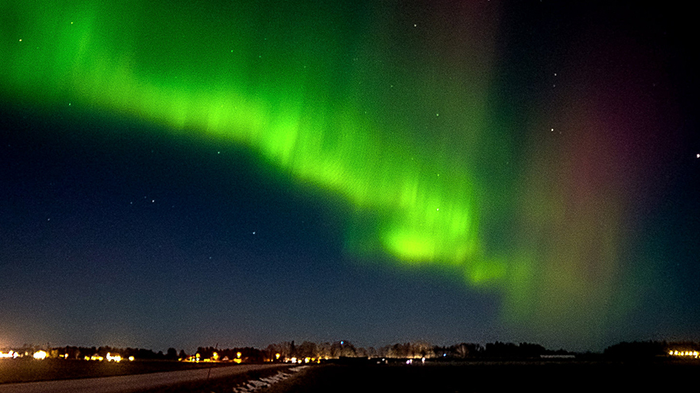Despite the fact that the Earth’s magnetic field protects people from space weather and solar wind — it does not always provide full safety.
 An aurora appears over Uppsala, Sweden, in late January 2021. Such phenomena can result when plasma jet occur in Earth’s magnetosphere. Image Credit: Kjell Carli/KTH Royal Institute of Technology.
An aurora appears over Uppsala, Sweden, in late January 2021. Such phenomena can result when plasma jet occur in Earth’s magnetosphere. Image Credit: Kjell Carli/KTH Royal Institute of Technology.
A new mechanism has been found by researchers in Earth’s space environment that can enable solar particles to slip via the planet’s first line of defense.
The constant interaction that takes place between the Earth’s magnetic field and the Sun’s supersonic particles at times leads to small-scale plasma jets that could lessen the barrier’s safety against space weather effects. This not only produces glorious aurorae but can also provoke interruption of satellite communications and power grids.
In the current study, scientists from the KTH Royal Institute of Technology in Stockholm identified and explained the mechanism by which these high-pressure jets take place when the speed of supersonic solar wind has been dulled by the bow shock of Earth’s magnetosphere.
The study has been published in the journal Nature Communications.
Raptis says that the results can be applied globally.
The findings could be fundamental in shocks. They may also exist in other similar plasma environments, which can be found everywhere in universe, from astrophysical objects to other planets, as well as here at Earth.
Savvas Raptis, Study Lead Author and Doctoral Student, KTH Royal Institute of Technology
Since plasma travels at supersonic speed toward Earth, it collapses into the magnetic field that emanates from the core of the planet and decelerates suddenly. This forms a bow shock, beyond which comes a transition zone called the magnetosheath.
This is the place where compressed and heated plasma tends to stay comparatively even for the most part, but where downstream and upstream waves and particles communicate and evolve — sometimes setting the stage for new phenomena. One result of this dynamic is the development of jets with dynamic pressure higher than that of the solar wind itself.
Utilizing the instruments aboard NASA’s four Magnetospheric Multiscale Mission (MMS) satellites, the scientists followed the development of such downstream jets from the bow shock — and traced their origin as a direct effect of the upstream wave evolution and the bow shock reformation, stated Raptis.
Raptis states that concentrating on small-scale research is essential to comprehend the details on how the space environment of Earth has been arranged.
Most research in recent decades has focused on the large-scale changes caused by macroscale phenomena connected to solar activity. But as we discover more and more smaller-scale phenomena, we see that environments such as the Earth’s bow shock and associated phenomena like magnetosheath jets play a very important role.
Savvas Raptis, Study Lead Author and Doctoral Student, KTH Royal Institute of Technology
Raptis states that the study also stresses the significance of missions like MMS, which in 2015 launched four spacecraft into Earth’s orbit to travel in tetrahedral formation near the planet and allow high-resolution observations of the magnetosphere at work.
KTH scientists like Raptis’ co-authors Tomas Karlsson, professor of plasma physics, and researcher Per-Arne Lindqvist, assisted the MMS mission with the design of components, and they continue to execute research on the data the mission produces.
We were able to observe previously unexplored parts of the Earth’s surrounding space environment. We showed how useful such space missions are for understanding and explaining nature. The evolution of shocks and how it is connected to the generation of jets is a necessary piece to understand the Earth’s space environment.
Savvas Raptis, Study Lead Author and Doctoral Student, KTH Royal Institute of Technology
Journal Reference:
Rapitis, S., et al. (2022) Downstream high-speed plasma jet generation as a direct consequence of shock reformation. Nature Communications. doi.org/10.1038/s41467-022-28110-4.